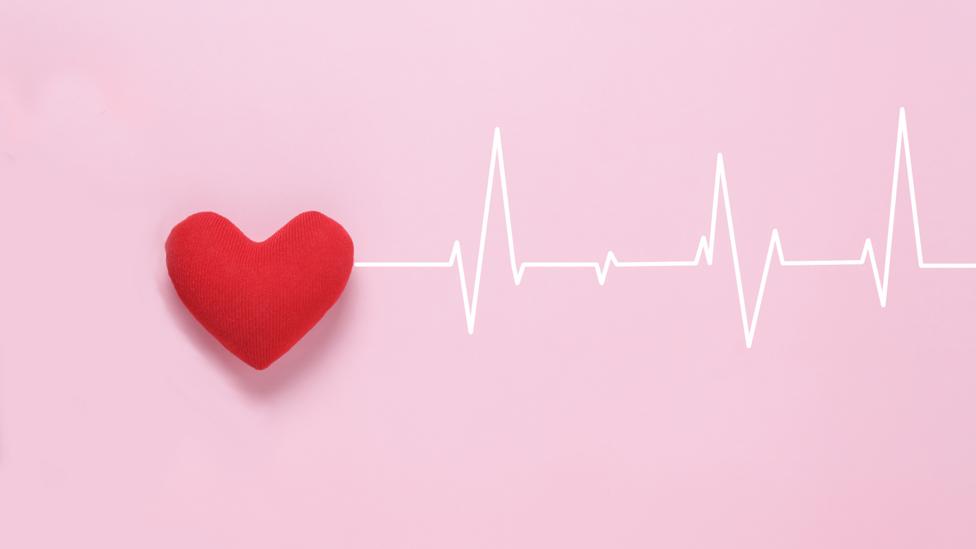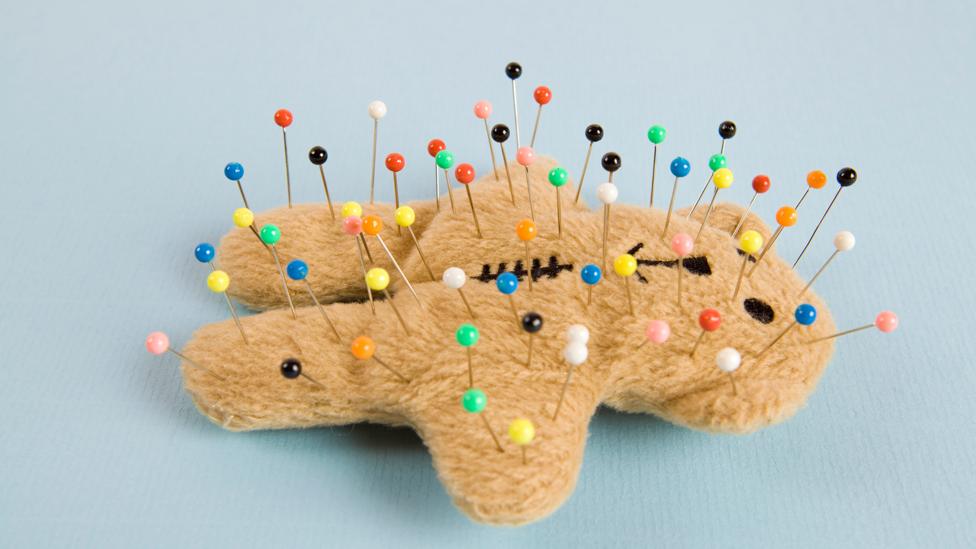Pain bias: The health inequality rarely discussed
THE HEALTH GAP
HEALTH
In 2009, my doctor told me that, like “a lot of women”, I was paying too much attention to my body. Saying there wasn’t an issue, he suggested I just relax and try to ignore the symptoms.
The decision seemed to run counter to what my records showed. A few weeks earlier, I had ended up in the emergency room with chest pains and a heart rate hitting 220 beats per minute. The ER crew told me it was a panic attack, gave me Xanax and told me to try to sleep.
I’d had panic attacks before. I knew this episode was not one. So I went to my doctor.
You might also like these other stories in the Health Gap:
He put me on a heart monitor overnight. Bingo: I had another episode, this time recorded. It didn’t matter. I still left his office thinking it was perhaps anxiety. And so, listening to the advice, I tried to ignore the pain.

‘I left his office thinking it was perhaps anxiety’ (Credit: Getty Images)
Until it happened again. And again. First every month, then every week. Over the following nine years, I would complain about it and be told again that I was having panic attacks or anxiety, that women don’t feel heart pain the way I was feeling it, and that maybe I was just confused. (Find out more: Can you have a heart attack and not realise it?)
My experience was not uncommon. Abby Norman, author of Ask Me About My Uterus, went through a similar path to discovering she had endometriosis, a painful condition where endometrial tissue grows on other organs than the uterus. Several doctors told her she had a urinary tract infection – until she went to an appointment with her boyfriend, who could vouch for her pain. Norman writes that she also struggled to be diagnosed with appendicitis; one doctor decided her symptoms were the result of childhood sexual abuse, even though Norman was clear that that never had happened.

In the medical industry, women’s pain often is dismissed (Credit: Getty Images)
Both anecdotes and academic research point to a disturbing trend: in the medical industry, there’s a long history of dismissing women’s pain. More difficult to determine is whether this is due to gender bias, a lack of medical research on women, or actual differences between how the sexes interpret pain.
One study found that women in emergency rooms are less likely to be taken seriously than men
What we do know is that when it comes to pain, men and women are treated differently. One study, for example, found that women in the emergency department who report having acute pain are less likely to be given opioid painkillers (the most effective type) than men. After they are prescribed, women wait longer to receive them.
Another study found that women in emergency departments are less likely to be taken seriously than men. In a 2014 study from Sweden, once in the A&E women waited significantly longer to see a doctor and were less often classified as an urgent case.
This can have lethal consequences. In May 2018 in France, a 22-year old woman called emergency services saying her abdominal pain was so acute she felt she was “going to die.” “You’ll definitely die one day, like everyone else,” the operator replied. When the woman was taken to hospital after a five-hour wait, she had a stroke and died of multiple organ failure.
Seeing women treated differently in the emergency department is a fairly well established phenomenon, says Esther Chen, an emergency medicine doctor at Zuckerburg San Francisco General Hospital and co-author of the study on opioid painkillers.

Once in the A&E, women wait significantly longer to see a doctor than men (Credit: Getty Images)
But “it’s hard to tease out whether it’s simply implicit bias – which all of us have – or whether it’s the way we judge women and pain in terms of their presentation for different clinical conditions,” Chen says.
Her study, for example, researched acute abdominal pain. She suspects that women who present to the emergency department with abdominal pain are often assumed to have a gynaecological problem, which many doctors believe is less likely to require opioids than an acute surgical disease.
Meanwhile, women are more likely to receive anti-anxiety medications than men when they come to a hospital with pain – and are more often written off as psychiatric patients. (Read more about how the risk of having ailments written off as psychological can lead to misdiagnosis and longer journeys to treatment for women).

Rather than given tests to rule out physical conditions, women are more likely to be written off as psychiatric patients (Credit: Getty Images)
“Women have been more often referred to psychologists or psychiatrists, whereas men are given tests to rule out actual organic conditions,” says Christin Veasley, co-founder and director at the Chronic Pain Research Alliance who helped compile the above report.
As former executive director of the National Vulvodynia Association, Veasley saw an alarming track record of bad medical diagnoses and advice.
It’s hard to imagine that a medical professional who took an oath to ‘do no harm’ could say these things – Christin Veasley
“The things I heard from women… that doctors told them were completely ridiculous,” she says. “Things like, you must be having marital problems. Have a glass of wine before you have sex. It’ll be better. The list goes on and on.
“It’s hard to imagine that a medical professional who took an oath to ‘do no harm’ could say these things.” (Read more about vulvodynia, a common and painful condition, on the Health Gap).

‘Have a glass of wine before you have sex – it’ll be better’ (Credit: Getty Images)
The evidence that women are faster to go to the doctor is ‘surprisingly weak and inconsistent’
The common assumption is that women are quicker to complain of medical problems than men. Indeed, one UK study found, for example, that men consulted GPs 32% less than women. It’s possible that doctors therefore dismiss women’s reports of pain as less serious.
But other evidence suggests that it is wrong to assume that women are more likely than men to complain about the same pain. A meta-analysis of studies on two common types of pain, back pain and headache, found that men and women were equally likely to go to the doctor. The evidence that women are faster to go to the doctor is “surprisingly weak and inconsistent”, the researchers wrote. A similar study found women were no more likely to consult a GP than men with the same pain symptoms.

Research has found that women have a lower pain tolerance than men (Credit: Getty Images)
Still, many researchers and doctors point out that studies dating as far back as 1972 and as recently as 2003 show that women have a lower pain tolerance than men – something encouraged, of course, by cultural gender norms. Research also has found that women present with symptoms more closely resembling anxiety and have a higher tendency of becoming addicted to opioids, points out Karen Sibert, president of the California Society of Anesthesiologists.
When people are anxious, their pain tolerance becomes less – Karen Sibert
As a result, it might be entirely appropriate to dole out anti-anxiety medication to women before taking the extra step of painkillers, Sibert says. “When people are anxious, their pain tolerance becomes less,” she says. “It may be best to try to get their anxiety and fear under control first and then see what the pain requirements are.”
Another complication is that oestrogen alters both the perception of pain and the response to painkillers, says Nicole Woitowich, director of science outreach and education at the Women’s Health Research Institute.
That means there are “sex differences in the way women experience pain”, Woitowich says. So it’s imperative that women and men are treated differently in order to develop a personalised approach to the patient’s care.

There are sex differences between how men and women experience pain (Credit: Getty Images)
If doctors want to focus on treating patients in a tailored, effective way, they “should at least start by treating patients based on their chromosomal makeup, either male (XY) or female (XX),” Woitowich says.
Sex study
But to know exactly what those differences are – and how they affect treatment – much more research is needed.
Before 1990, clinical trials and diagnoses in the US focussed on men
Before 1990, the year the National Institutes of Health (NIH) introduced the Office of Research on Women’s Health, clinical trials and diagnoses in the US focussed on men. (These trials often were overseen by men as well.) In Europe, women have been similarly left out of studies. Same with Canada and the UK.
That led to a massive body of medical evidence, including pain-focused lab studies, with a predominantly male perspective.
“When the history of an ailment, including the defining of textbook cases, is largely being written by men about men, it becomes the precedent to which anyone else is held up,” Norman says.

When what doctors know about a health condition is based mostly on studies of men, men’s experiences become the norm against which women are measured (Credit: Getty Images)
In 2015, the US’s NIH introduced a policy that requires medical investigators to take sex into consideration as a biological variable. Now, anyone who applies for grant funding from the NIH must either research both males and females, or give compelling reasoning for why only one sex should be examined. We have yet to see, though, if it will make a difference. “Since this policy is relatively new, it may take a few more years before we see if it has made an impact on how research is conducted and if it has become more inclusive,” Woitowich says.
In 2017, the National Health Service in the UK also issued a similar dictum that the NHS must “listen to women” – though this was only meant to speed up endometriosis diagnoses. Since the early 2000s, Canada and Europe have incorporated similar policies; however, none of these have become laws or requirements, instead operating as suggestions and advice for researchers.
That doesn’t, however, eliminate the innate biases that physicians and other medical workers tend to have towards women’s pain.
A study showed patients with more ‘feminine’ personality traits across both genders had a higher risk of poor access to care
Louise Pilote of Quebec’s McGill University Health Center co-authored a study showing patients with more ‘feminine’ personality traits across both genders had a higher risk of poor access to care. On the surface it may seem like that backs an implicit bias between treating men and women. But she points out that it was more complicated: the variations actually stemmed from poverty and how ‘feminine’ the personality, according to traits outlined in the Bem Sex Role Inventory, not from biological sex.
Pilote also has an evidence-based explanation for why my own heart issues were postponed for so long. Heart disease is less prevalent in women than men. It occurs later in life in women. And when women are seen for cardiac issues, they often focus on symptoms outside the realm of chest pain, she says.

Heart disease is less prevalent in women than men (Credit: Getty Images)
Indeed, I was mostly concerned with how I felt as a result of my chest pain and rapid heartbeat: lightheaded, out of breath, and dizzy. I can see why a doctor might consider it to be simple anxiety.
In January 2018, I finally found resolution in the form of a different cardiologist, a woman who listened and didn’t explain away my pain as just a side effect of worrying or anxiety. I got back on a heart monitor, received an official diagnosis –and in March underwent surgery.
Perhaps I waited almost 10 years for treatment because heart disease is less common in women. Perhaps because my symptoms truly sounded like textbook anxiety. Or perhaps because of gender-based assumptions that women are more likely to complain of pain and less likely to have physical reasons for it.
Even if I think my gender had everything to do with it, I’m not sure it will ever be possible to know for sure. And all that says to me is we have a long way to go before women and their pain can be fully understood.
This story is part of the Health Gap, a special series about how men and women experience the medical system – and their own health – in starkly different ways.
Do you have an experience to share? Or are you just interested in sharing information about women’s health and wellbeing? Join our Facebook group Future Woman and be a part of the conversation about the day-to-day issues that affect women’s lives.
Join 800,000+ Future fans by liking us on Facebook, or follow us on Twitter.
If you liked this story, sign up for the weekly bbc.com features newsletter, called “If You Only Read 6 Things This Week”. A handpicked selection of stories from BBC Future, Culture, Capital, and Travel, delivered to your inbox every Friday.
Discover more from ReviewFitHealth.com
Subscribe to get the latest posts sent to your email.
